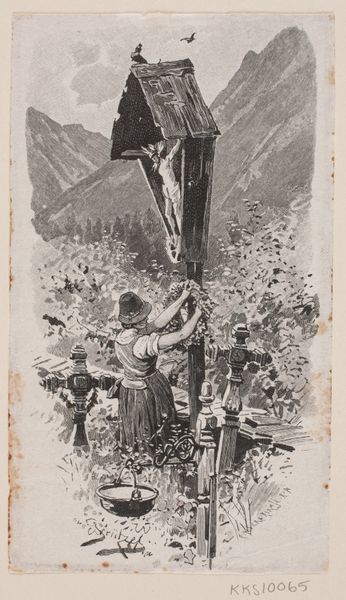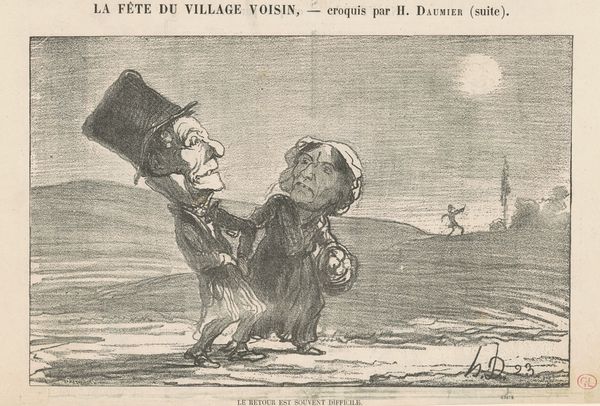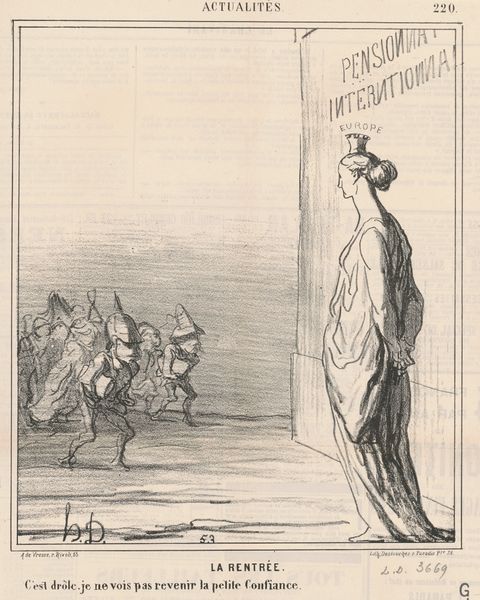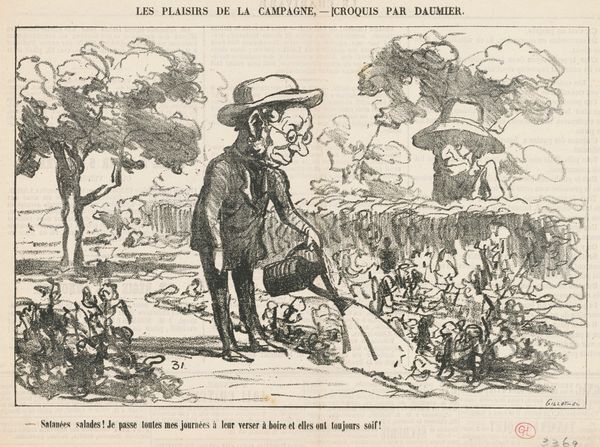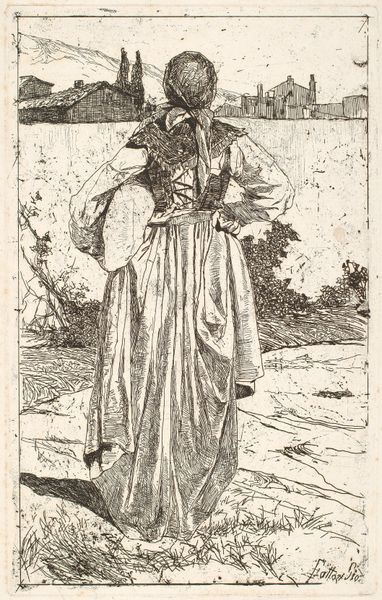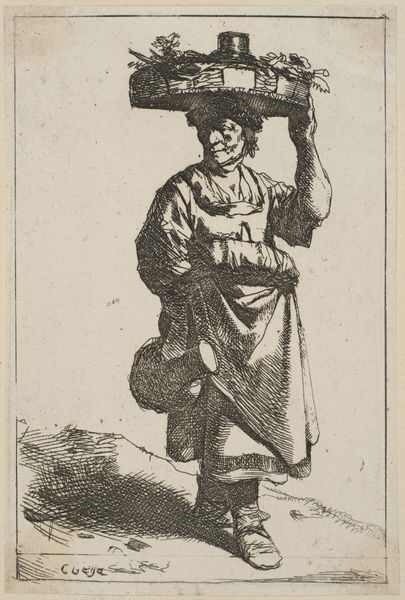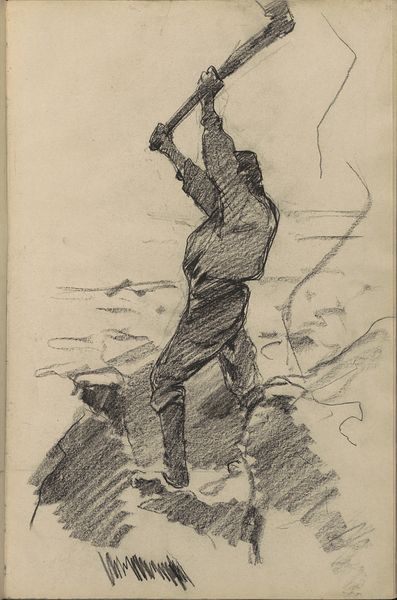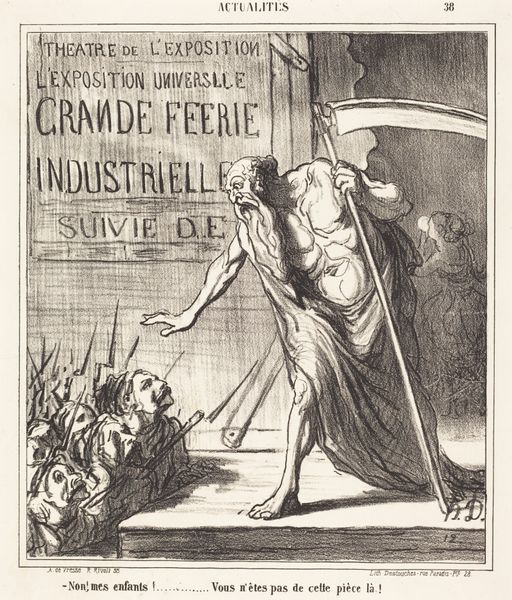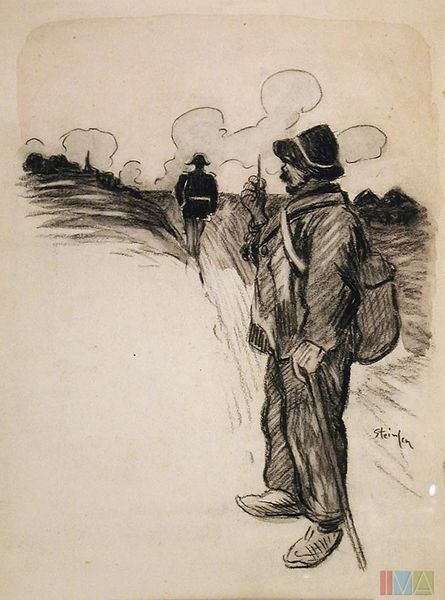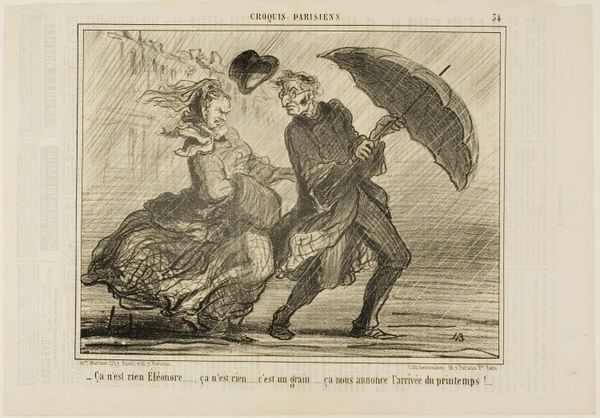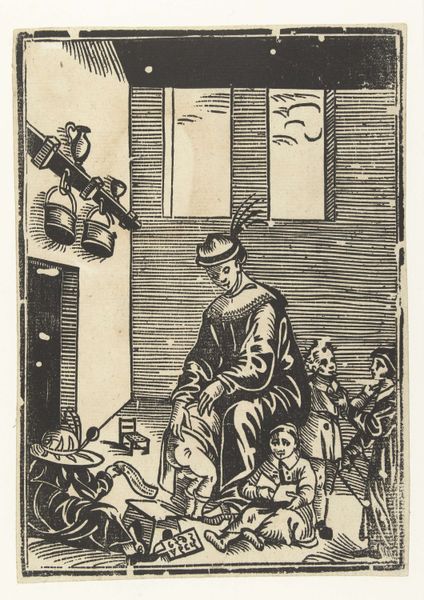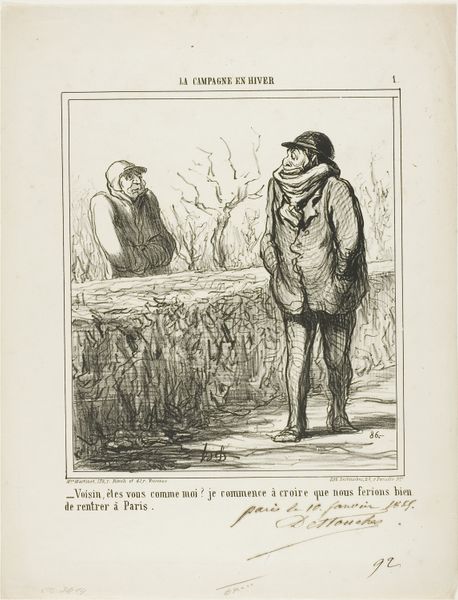
drawing, graphic-art, lithograph, print, pen, poster
#
drawing
#
graphic-art
#
comic strip sketch
#
hand-lettering
#
lithograph
# print
#
hand drawn type
#
hand lettering
#
text
#
personal sketchbook
#
sketchwork
#
hand-drawn typeface
#
pen work
#
symbolism
#
pen
#
storyboard and sketchbook work
#
poster
#
small lettering
Copyright: Public domain
Editor: So, this is "A Biribi," a lithograph poster by Théophile Alexandre Steinlen from 1890. The stark contrast and sketchy lines give it a really somber mood. What do you see in this piece? Curator: Immediately, I'm drawn to the visual vocabulary surrounding the title. "Biribi" was a term for French penal battalions in North Africa. Notice how the laborers fade into the background as if nameless, faceless? The central figure, with his head bowed and shovel in hand, embodies a kind of resignation. It speaks to the crushing weight of colonialism and exploitation. What emotional quality does this evoke in you? Editor: Definitely a sense of hopelessness, like there's no escape. The lettering above and below also seems quite intentional… Curator: Precisely. The stark lettering announcing the title mimics a kind of official decree. And then the hand-drawn typeface for Aristide Bruant, the songwriter, offers a stark contrast. He's foregrounded, almost romanticized, while the reality of Biribi remains obscured for public consumption. Don't you think this is a form of commentary, and cultural memory playing out before us? Editor: Absolutely! The song title is monumentalized, overshadowing the plight of those actually *in* Biribi. It makes you question who controls the narrative. Curator: Exactly. What seems like a simple advertisement for a song opens a window into the complex socio-political issues of the time, doesn’t it? The symbols and their arrangements hint at how power structures and human suffering were made invisible or reshaped to elicit a particular emotion, and maintain the dominant ideology of the time. Editor: I see the poster as a visual encoding of social critique! This definitely makes me want to learn more about Steinlen’s broader work and the context of these penal battalions. Curator: Agreed, there's much more to unearth here, a stark contrast to what seems at first glance as mere advertisement.
Comments
No comments
Be the first to comment and join the conversation on the ultimate creative platform.

